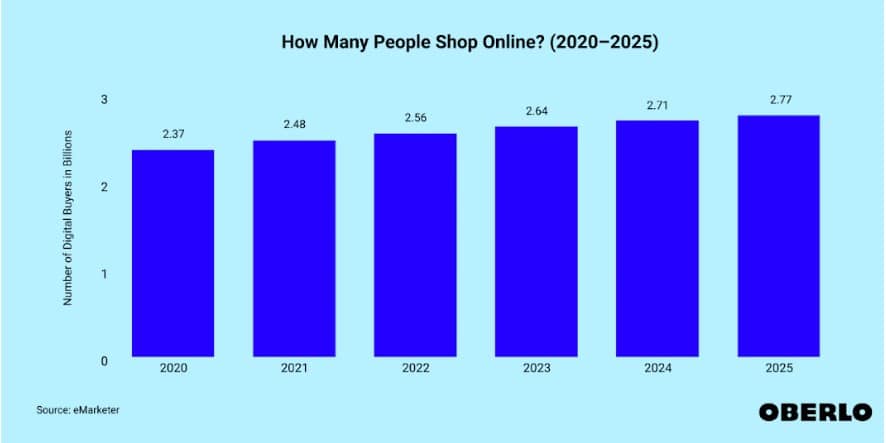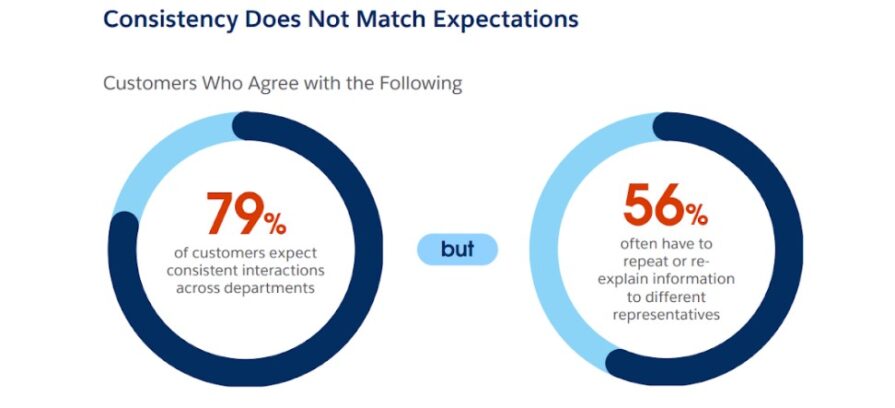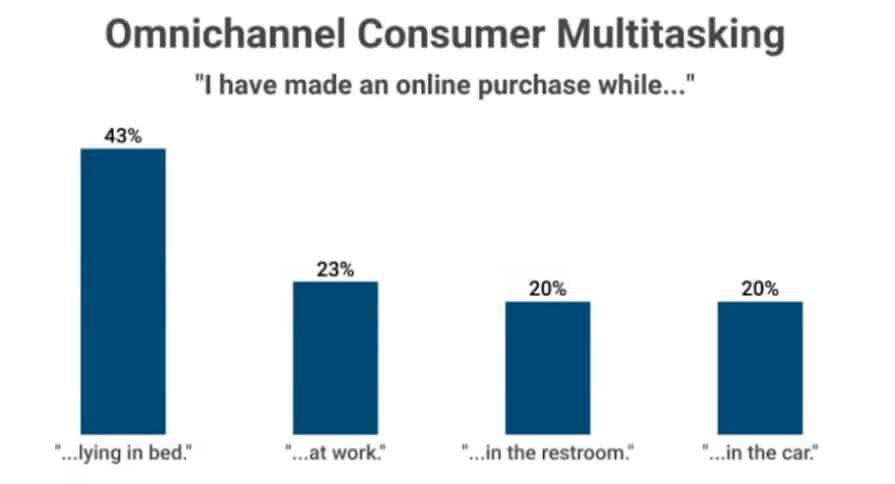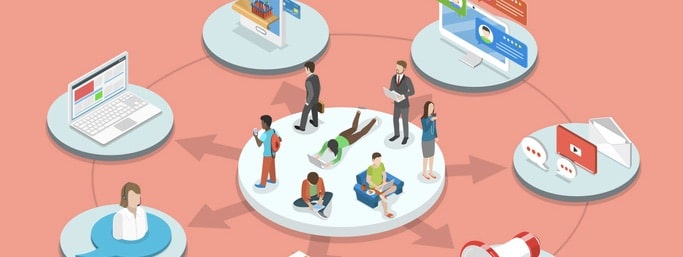Shopping has evolved dramatically over the years. No longer confined to physical stores, today’s consumers can effortlessly purchase on your website, grab deals from emails, or simply click “Add to cart” while scrolling through your socials.
The stats speak for themselves, with around 2.71 billion buyers now shopping online.

Image sourced from oberlo.com
Enter omnichannel marketing—a term buzzing in the ears of professionals like you. But how do you move beyond the buzz and make it work for your business? The key is a well-executed strategy.
This guide provides a detailed framework for constructing a robust and long-lasting omnichannel approach that’ll give you the sustained results you’re after. Let’s begin.
Understanding omnichannel marketing
Imagine you’re on the marketing team of a virtual contact center. A customer is checking out your solutions and decides to add something to their cart. Later, they change their mind, leave your site, but then spot an ad on social media. This is a prime example of omnichannel marketing.
‘Omni’ means ‘all,’ and ‘channel’ is how your customers interact. In 2024, they can move seamlessly across both online and in-person mediums. Not all of them want the same thing, and omnichannel approaches get that. Effective omnichannel marketing happens when companies provide a suite of seamlessly integrated channels that cater to customer preferences.
Going back to our business phone line provider example, an omnichannel approach ensures the customer’s experience flows across various touchpoints. An email might follow up, offering further details or a special promotion. If the customer decides to revisit your website, the product remains in their cart, creating a consistent and personalized journey.
Why omnichannel marketing is important
Now that you better understand what omnichannel marketing is, let’s discuss why you should consider creating an omnichannel strategy for your business. Here are some of the core benefits.
Better customer experiences

Image sourced from salesforce.com
Stellar customer experiences are non-negotiable in modern business. Buyers crave consistency and seamlessness across every touchpoint they use.
With an omnichannel strategy, you guarantee that they’ll encounter the same message and experience across all your touchpoints regardless of their chosen channel.
Personalization
In the game of marketing, personalization is the winning move, and an omnichannel strategy allows you to gather customer data from various different channels. This is the key to understanding customer preferences and behaviors. With these insights, you can craft marketing messages and offerings that feel tailor-made.
Streamlined convenience

Image sourced from capitaloneshopping.com
Online shopping embodies our love affair with convenience. New data reveals that 43 percent of shoppers purchase from bed, 23 percent do so during office hours, and 20 percent even indulge in a little shopping spree in the bathroom.
Omnichannel marketing puts the power of choice into your customer’s hands. They get to engage with your brand through their preferred channels and in their own time, making both shopping and customer interactions easier.
Tightly interwoven with the overall customer experience, this pulls prospects further down your marketing funnel by reducing the effort required to get the information they need.
Omnichannel for PR
Omnichannel marketing can also be really beneficial to your PR team. That’s because customer connection is crucial in public relations, and an omnichannel approach allows you to better connect with your audience.
Your PR strategies can thus reach consumers through their preferred channels and provide various options for issue resolution.
To stop us from getting sidetracked here, check out our complete guide on why omnichannel PR is so important for more information.
Getting started with an omnichannel marketing strategy
If you’re yet to implement an omnichannel marketing strategy in your business, here’s our advice on how to get started.

Tip 1: Know your audience
Before crafting an omnichannel marketing strategy, you’ve got to know your audience like the back of your hand. We’re talking serious market research here—the kind that digs deep and spills secrets your customers might not even know they have.
To do this, try to create detailed customer personas. Give your customers aliases that embody them. How old are they? What gender? What keeps them up at night, scrolling through their favorite apps?
Armed with this knowledge, you can curate an omnichannel strategy that’s not just good but legendary. You’ll be able to handpick the channels your audience practically lives on, ensuring your messages are heard loud and clear.
Tip 2: Pick your channels wisely
Not all channels are created equal, and in the case of omnichannel marketing, you do have to play favorites. Check out the digital and physical landscape and determine where your preferred crowd likes to learn about you. Then, prioritize these spots.
For example, if your customers love signing up for your email newsletter, email marketing should be one of your favored touchpoints. If they follow your content on Instagram, why not add social media ads to your strategy? The goal is to create a smooth ride for your audience across their most-frequented channels.
Tip 3: Technology integration
Invest in technology that can facilitate seamless data integration too. The best thing for this is the right customer relationship management (CRM) software. This will ensure a smooth flow of customer data across your tools and systems.
Tip 4: Consistent messaging
Remember earlier when we talked about how customers value consistency? Well, you need to be sure you’re maintaining this across channels while still tailoring content to each individual.
Instant brand recognition should be the aim wherever your customers are, so use their data for personalized but uniform messaging to enhance the overall experience and improve conversion rates.
Tip 5: Measurement and optimization
In addition, we recommend consistently tracking the outcomes of your omnichannel strategy by closely monitoring key performance indicators, like conversion rates and customer retention.
Why not conduct A/B testing to experiment with diverse approaches and fine-tune campaigns for optimal performance?
Remember, omnichannel marketing is a continual journey that demands adaptability and responsiveness to evolving market dynamics.
Final thoughts
So, there you have it: our quick and easy guide to creating your business’s omnichannel marketing strategy. Get to know your audience, pick your favorite channels, weave data in seamlessly, and keep your messaging on point. You’ll also want to keep tabs on how things are going, test the waters with different approaches, and tweak as needed.
Here’s to making your brand the talk of the town with the help of our top tips!








